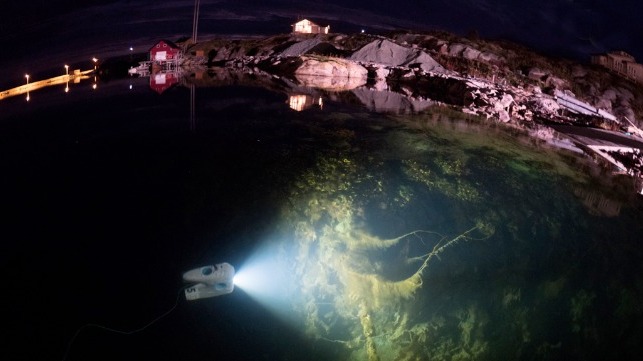Robots Raise Secrets of the Sea From the Depths

The mysteries below the ocean’s surface have inspired human exploration and imagination for centuries. New marine robotics now make it possible to explore what goes on in the ocean depths.
The ocean covers fully two thirds of our planet and still holds deep mysteries. It offers great opportunities for industries, such as cultivating algae for food, fuel and energy production, fisheries, farming, renewable energy from wind and waves, extracting minerals, metals, oil and gas, transport, and perhaps other as yet unknown industries. A big part of future business development is predicted to take place in connection with the ocean.
The ocean can also tell us a lot about the state of the planet. We know some things. But remains infinitely much that we don’t know remains to be learned. “About 90 per cent of the ocean hasn’t yet been explored. It’s difficult to measure and obtain samples from the ocean, and this is where marine robotics offers solutions,” says Martin Ludvigsen, director of NTNU’s Applied Underwater Robotics (AUR) lab.
Underwater robot for the people
For almost 50 years, Norway has been working to develop offshore technology for the oil and gas industry, and the knowledge from this industry is now being used for other new industries and applications. These include developing technology for underwater vehicles and navigation and dynamic positioning.
These new technologies are the focus for researchers and engineers at the NTNU AUR-lab and NTNU AMOS (Centre for Autonomous Marine Operations and Systems). The centres work closely with businesses and with SINTEF Energy Research.
The start-up company Blueye Robotics AS has emerged out of this collaborative environment and developed Blueye Pioneer, a camera-equipped underwater drone. The ocean drone will soon be available on the national and international consumer market.
Blueye Robotics combines innovative ocean technology with its knowledge of user experience to create professional underwater drones for consumers. Blueye Pioneer is a remotely operated vehicle (ROV) capable of operating down to 150 metres, far deeper than other drones.
Blueye has a highly light-sensitive camera, and the drones manage to stay stable even under rough ocean conditions. A smartphone, tablet or PC connected via a cable controls the drone, which can also be fitted with sensors to measure water qualities, such as temperature, chlorophyll, and salinity.
Recipient of consumer technology award
Blueye Pioneer has been selected as an Honoree by the CES 2018 Innovation Awards, which is an annual competition for outstanding consumer technology products. “What we’ve done is to start with basic technology and develop it for a consumer market – which is quite un-Norwegian its approach. But we think it has good potential,” says Ludvigsen.
He draws a parallel with what has happened to aerial drone technology, which in the space of only a few years has gone from being an expensive technology reserved for the few to now being accessible to practically everyone. The NTNU researchers and Blueye believe that the same thing could happen with ROVs.
“We hope that the Blueye Pioneer will increase people’s awareness of the ocean and what is beneath the surface. By giving people access to the ocean, we think that they’ll also become curious about it and love it,” says Ludvigsen.
The ocean is a huge resource, but at the same time it’s also vulnerable. “There’s so much we don’t know, but that we need to know to understand and take care of this vulnerable resource,” says Christine Spiten, co-founder of Blueye. “Blueye Pioneer gives people who are curious about the ocean the opportunity to dive into the depths without interfering with the fragile environment."
The underwater drone was launched last summer and was used to explore Australia’s Great Barrier Reef, the world’s largest known coral reef, last fall. Dean Miller, Director for Science and Media at the Great Barrier Reef Legacy, told the Sydney Morning Herald that the Great Barrier Reef Marine Park is an area that is large and difficult to access. “The Blueye Pioneer drone can help us to better understand this fragile ecosystem, especially the reef’s most remote, unexplored reaches that divers can’t easily access,” he says. “We have a good broad-scale understanding of how the Great Barrier Reef was affected by the two consecutive bleaching events. What we don’t understand in great detail is how individual coral species and individual reefs have fared through this heat stress. We want to identify and fully understand the coral species that are able to make it through these events, and therefore we will have a much better idea where to invest our energy and resources for restoration efforts."
This article appears courtesy of SINTEF and is reproduced here in abbreviated form. The full-length original version may be found at https://geminiresearchnews.com/2018/01/secrets-sea-raised-depths/.
The opinions expressed herein are the author's and not necessarily those of The Maritime Executive.
